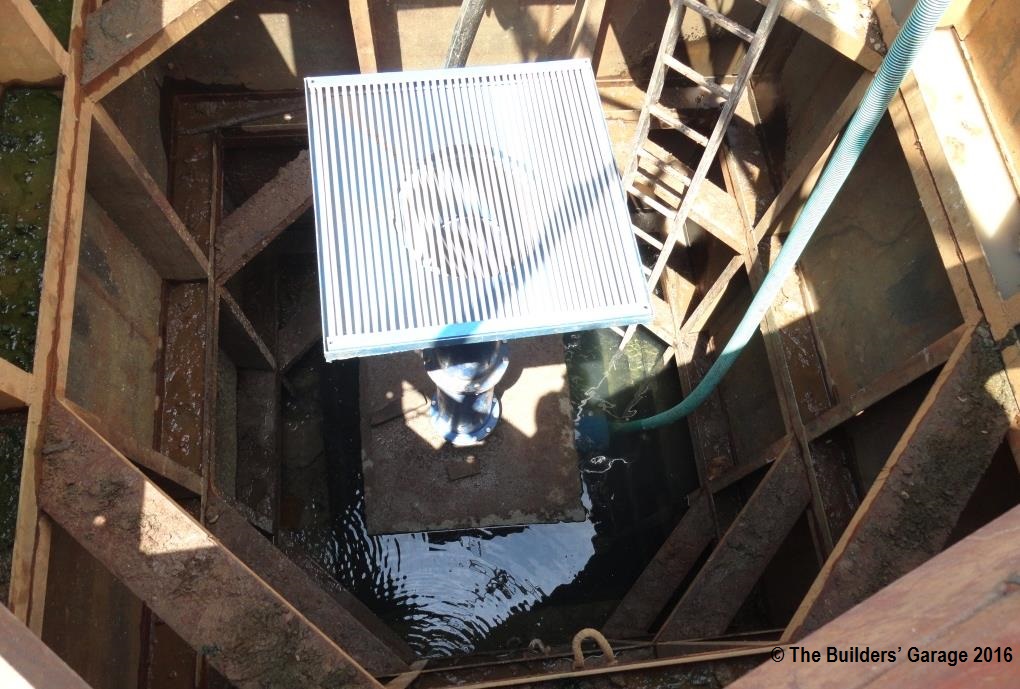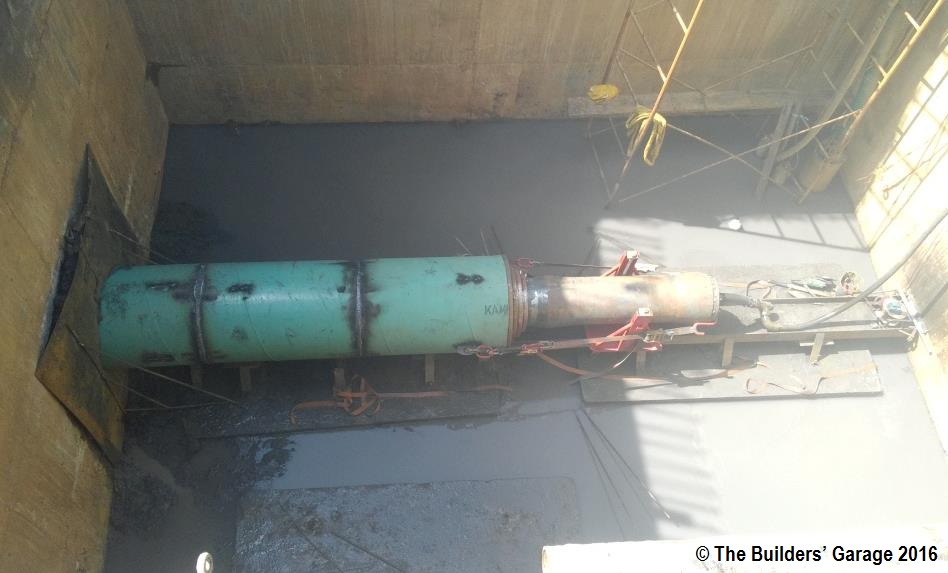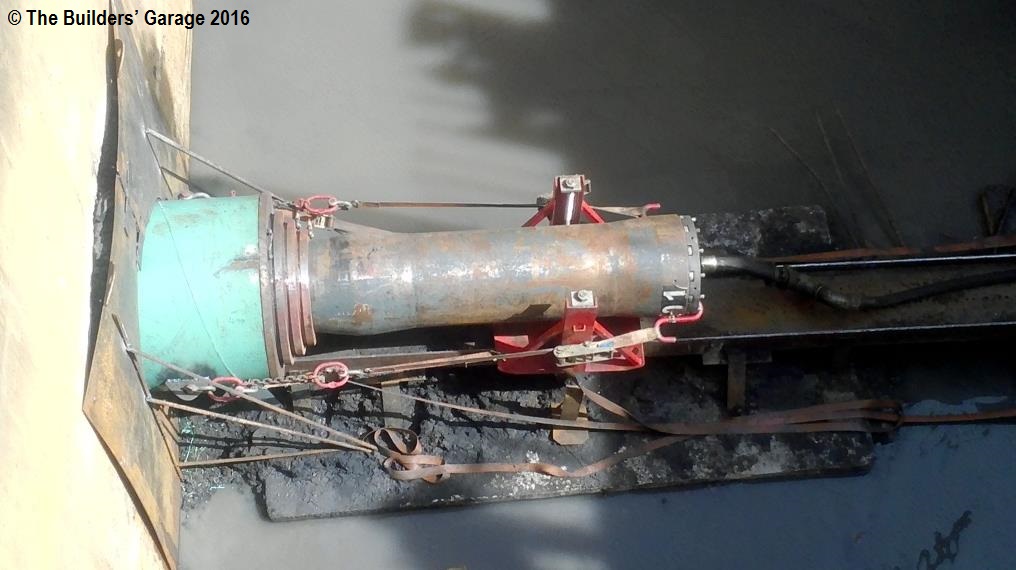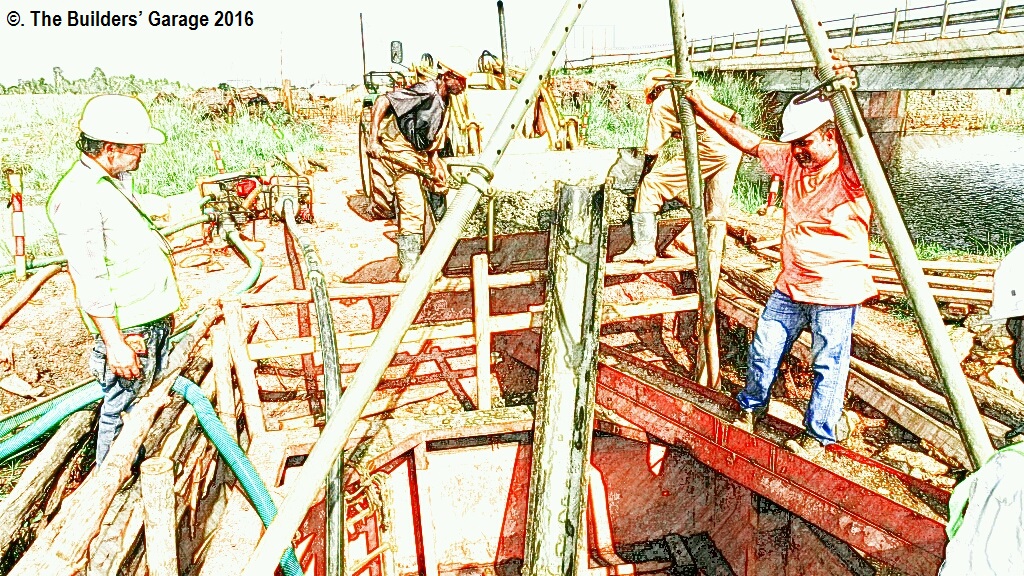Your choice of a consultant or contractor can make or break your project – Part 2
In Part 1 of this article, we profiled Daniel’s experience selecting a consultant and contractor to supervise and construct a new intake for a water utility. Along the way, some challenges arose.
This is the final account of Daniel’s experience…
What new work method did the contractor come up with?
In order to proceed with the construction works with minimum interference from the river water, the contractor came up with a method called caisson. This was selected to assist the contractor excavate below the ground level at the locations for the sump and bell mouth – to whatever depth he required. Unfortunately, the contractor had never been exposed to the caisson work method. In order to get some practical exposure under his belt, the contractor assembled a team of his site foremen and traveled to another construction site where the caisson method was being used.
Unfortunately, the contractor had never been exposed to the caisson work method. In order to get some practical exposure under his belt, the contractor assembled a team of his site foremen and traveled to another construction site where the caisson method was being used

Figure 4: The caisson method adopted at the bell mouth end enabled the installation of the bell mouth fittings
Was this the only challenge you experienced?
No. Another challenge arose.
In order to inset the 36-meter pipeline below ground and between the sump and the bell mouth, the contractor assumed that a simple boring method from the sump to the bell mouth would be sufficient to lay the main water feed pipeline. He mobilised a boring subcontractor who failed to do the job because the surrounding soils beneath the ground level were collapsible. When this issue came up, the consultant did not proactively provide an immediate remedy yet he should have pointed out that this method would not work. He had no clue of how to assist the contractor just like he had no clue when the coffer dam had failed.
At this point, we were approaching the end of the 8-month contract extension period that had been granted to the contractor. Since the contractor had already proposed this work method, another extension to the contract was not possible. He had to find a way of laying the pipeline in between the sump and the bell mouth.
We had not anticipated that the contractor was unaware of the complexity of the piping work. After numerous failed attempts, a nominated sub-contractor was proposed to the main contractor to help him lay the pipeline between the sump and the bell mouth. The nominated subcontractor deployed to site and adopted the dynamic ramming method to insert the pipeline between the sump and the bell mouth. The task was completed within 3 weeks.

Figure 5: Dynamic ramming method – Pic 1

Figure 6: Dynamic ramming method – Pic 2
Unfortunately, because of the delay in finishing the construction works on time, the client had to evoke the contract clause on liquidated damages.
How did you manage to continue working and paying a consultant who was not performing to your satisfaction?
The consultant replaced the resident engineer on three occasions but the contract had already been mismanaged. It was too late to rectify the situation. Fortunately, at the time of this writing, most of the civil works and electromechanical installations are almost complete and we should be commissioning the new intake in a couple of months.
Before you leave, could you share with us some of the lessons learnt?
Yes.
-
It is extremely important to fix the minimum time inputs for key supervision staff on a consultant’s team of experts otherwise the consultant will take advantage of this oversight. Should a supervision contract be signed with insufficient time input for the key experts on site, the contractor will be virtually on his own during the implementation of the works. You, as the client will eventually do his job and pay him for it.
-
For certain specialised works which require experienced contractors, entities need to consider repackaging such tenders (possibly within a bigger tender) in order to make the job more attractive for the big players. The job could turn out to be “more expensive” but there are chances that it would take a much shorter time to execute.
-
Even though the contractor who was eventually selected to construct the new intake did not have all the required experience on his own, he demonstrated that he had the will to work and get the job done. There is the type of contractor who concentrates on writing claim notices as opposed to getting the job done. Which one would you prefer?
-
Contingency sums come in handy and can rescue a contract at a very critical stage. You will recall that the original contract was extended for an additional 8 months. Fortunately, it was possible for the contractor to be paid for the adoption of an alternative work method because the contract was structured with a contingency sum.
-
For certain specialised works such as the construction of this intake, the standard construction contract with a design and supervision consultant might not apply; just like we have seen that a work method proposed by a consultant might not work. Certain experienced contractors have better solutions to solving unique challenges on construction sites. Contracts for specialised works should therefore be structured to allow the contractors propose alternative solutions at the tender stage or during implementation of construction works.
-
As a project manager, your job is to get a project completed within time at a reasonable cost and to acceptable standards. When such issues come up (and they will), it is extremely important to ensure that every decision you take drives the project towards successful completion.
- Always try to subject your engineering estimate to a thorough check in order to understand how your consultant has priced the construction works and which work methods he has considered in pricing the various packages of work involved in the overall scope. Certain entities are very strict when the engineering estimate largely differs from the prices at bid submission. In some countries or jurisdictions, you might be required to re-tender the works.
I have learnt a lot from this project and I will be willing to share many more experiences with you in case you find them suitable.
Thanks.
Conclusion
Listening to Daniel, I noted that he kept oscillating his experience between the actions that were taken or to be taken by the client, the consultant and the contractor. Obviously a lot was expected from the contractor but all the contract parties were interested in the successful completion of the project. His experience has reinforced my conviction that project management is a team effort.
There are many Daniels out there; who have probably gone through a much similar experience. I am sure that they all believe that even though there is a contract that binds all the parties (stipulating the obligations of each party); no one ever wants to be associated with a project that failed.
© The Builders’ Garage 2017. Permission to use this article or quotations from it is granted subject to appropriate credit being given to thebuildersgarage.com as the source.
Follow The Builders’ Garage on Facebook , like our page to receive updates and leave us a comment
Follow (connect with) the writer (Cyrus Titus Aomu) on LinkedIn


